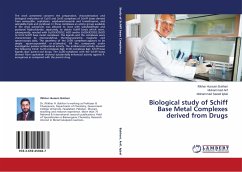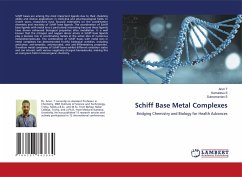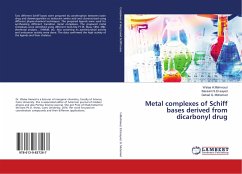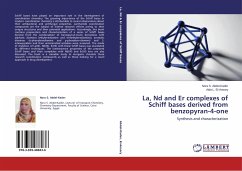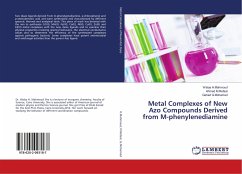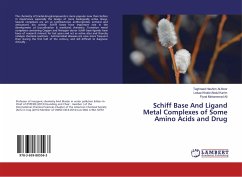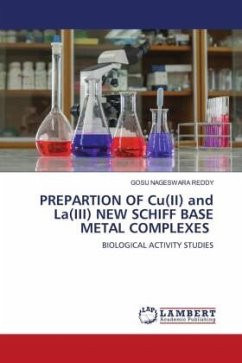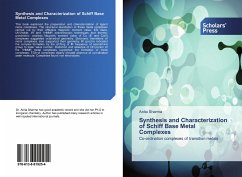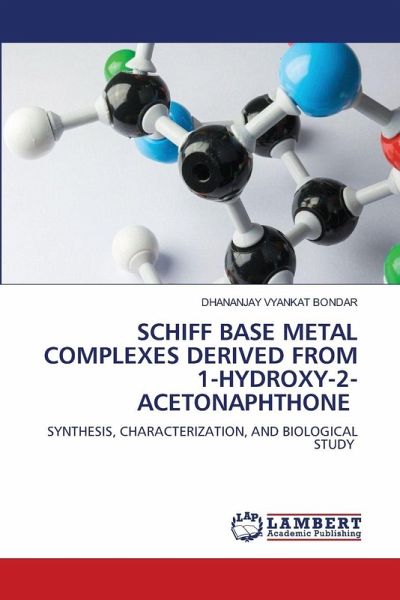
SCHIFF BASE METAL COMPLEXES DERIVED FROM 1-HYDROXY-2-ACETONAPHTHONE
SYNTHESIS, CHARACTERIZATION, AND BIOLOGICAL STUDY
Versandkostenfrei!
Versandfertig in 6-10 Tagen
60,99 €
inkl. MwSt.

PAYBACK Punkte
30 °P sammeln!
This book involves the condensation reaction-based synthesis of Schiff base ligands. Different aromatic ethylene amines react with 1-hydroxy-2-acetonaphthone. FT-IR, 1H NMR, 13C NMR, SC-XRD, and mass spectral analysis were used to validate the structures of the synthesized Schiff base ligands and their transition metal complexes [Au(III), Pd(II), Cu(II), Fe(II), and Mn(II)]. UV-visible, P-XRD, TGA-DTA, and ESR methods were used to characterize the physicochemical properties of the produced Schiff base metal complexes. The study in the areas of UV-visible, P-XRD, TGA-DTA, and ESR could be expan...
This book involves the condensation reaction-based synthesis of Schiff base ligands. Different aromatic ethylene amines react with 1-hydroxy-2-acetonaphthone. FT-IR, 1H NMR, 13C NMR, SC-XRD, and mass spectral analysis were used to validate the structures of the synthesized Schiff base ligands and their transition metal complexes [Au(III), Pd(II), Cu(II), Fe(II), and Mn(II)]. UV-visible, P-XRD, TGA-DTA, and ESR methods were used to characterize the physicochemical properties of the produced Schiff base metal complexes. The study in the areas of UV-visible, P-XRD, TGA-DTA, and ESR could be expanded to include additional recently synthesized complexes. Furthermore, the Schiff base ligands and their metal complexes are tested in vitro for anti-bacterial bioactivity against the gram-negative bacteria E. coli, P. aeruginosa, and gram-positive S. aureus, B. subtilis, as well as anti-fungal activity against two fungi, C. albicans and A. niger. The biological results of these studies indicate that metal complexes have greater antibacterial or antifungal activity against one or more species than the non-complexed ligand.



